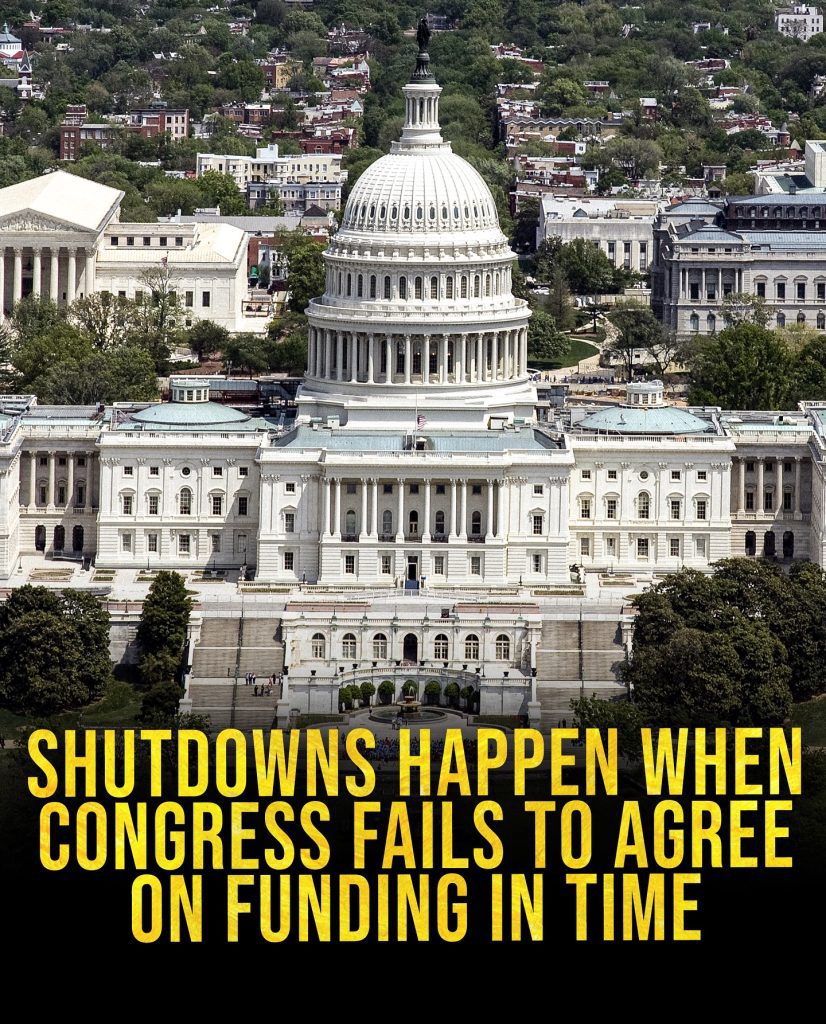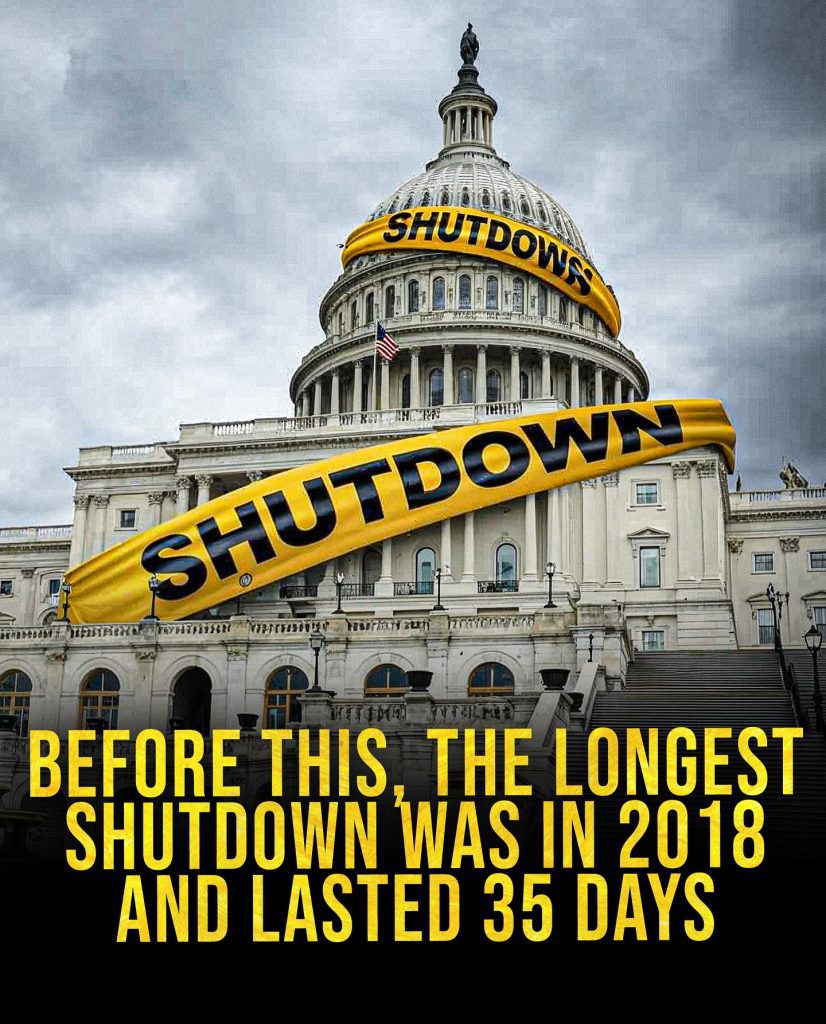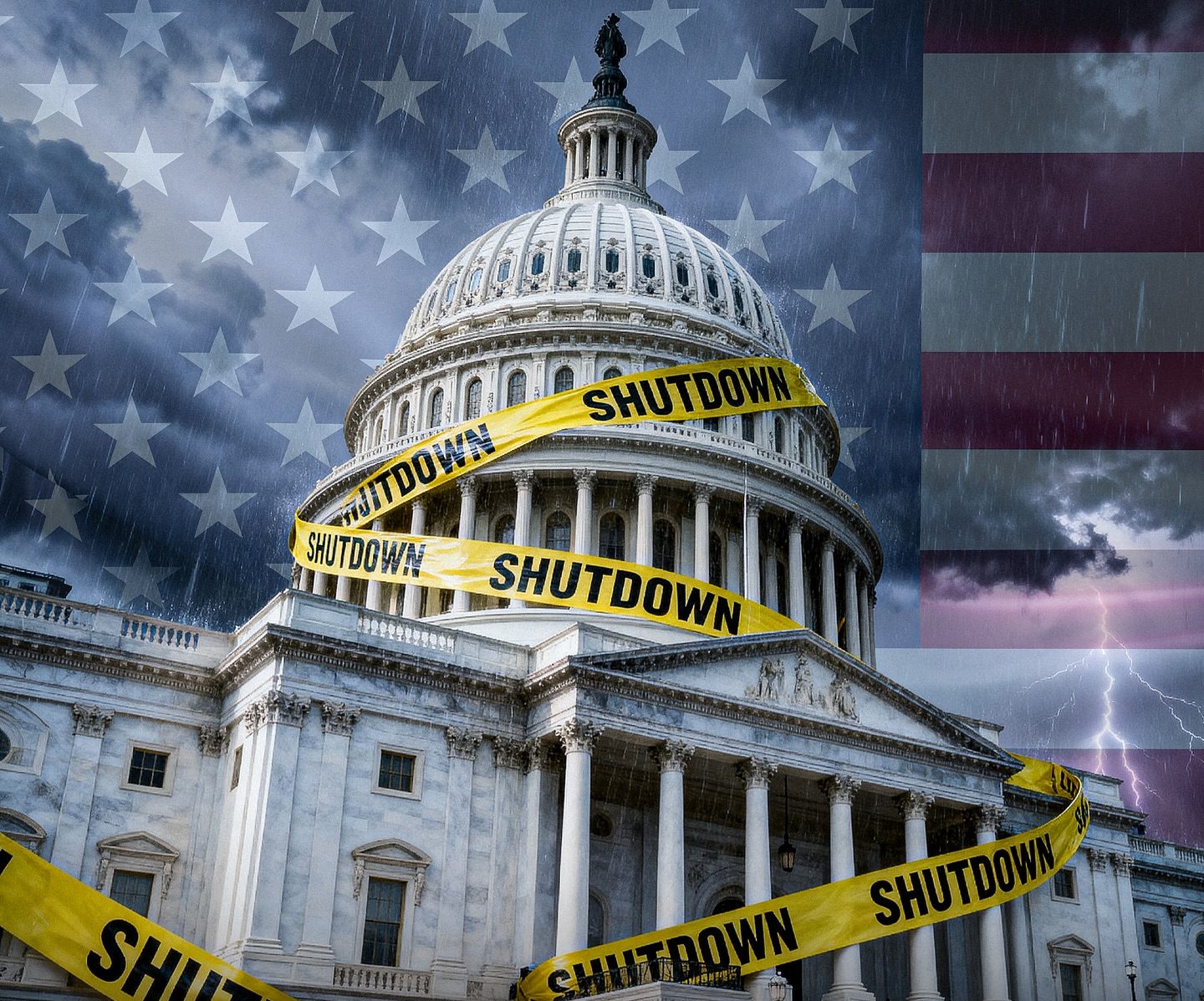This Shutdown Just Broke Records — 36 Days of Closed Doors, Unpaid Workers, and a City That’s Tired
I remember looking at the calendar and feeling the odd, small shock you get when something that once lived as an abstract headline becomes a lived reality. The number on the clock of a broken system ticked past another day, and then another — until suddenly, 36 days had passed and the U.S. government shutdown became the longest in the country’s history. That single fact is heavy: not just a bureaucratic milestone, but a stack of missed paychecks, delayed permits, and closed doors. For many families it has meant juggling bills, for travelers it has meant delays and cancellations, and for public servants it has meant showing up and holding their breath.

Most government agencies close, and many workers go unpaid
Walk past a federal building and the signs make it official in a way that a headline never can: CLOSED. No entry. The quiet outside those doors is the sound of a system paused. Agencies that provide services most of us take for granted—national parks, permitting offices, some court services—either shutter or run on the narrow margin of essential-only operations. And behind those doors are people: civil servants who are suddenly furloughed or forced to work without pay until Congress acts. Estimates counted in the hundreds of thousands of employees either furloughed or working without pay, and the backlog of missed services and delayed checks grows by the day. Those human details are what turn an abstract fight over bills into a string of real, immediate hardships.
Why shutdowns happen — Congress, funding fights, and the Antideficiency Act
The mechanics are dry but important: when Congress doesn’t pass appropriations—or a short-term continuing resolution—to fund the 12 annual spending bills, the law that governs federal spending kicks in. Under the Antideficiency Act, agencies are barred from obligating funds without an appropriation, and that has been interpreted to require agencies to suspend non-essential operations until funding is restored. That legal rule is what turns a budget fight into a shutdown: it forces the pause. So while the conversations on cable news sound like political theater, there is real legal and administrative machinery that snaps into place and changes the daily lives of people who depend on government functions.

Shutdowns happen when Congress fails to agree on funding in time
The human story is usually rooted in a very simple political logjam: disagreement over how money should be spent. One side wants terms that the other side can’t accept, or a party tries to force a policy priority into a must-pass funding bill. The result is a calendar that slips and a deadline that gets missed. I’ve seen this pattern before: it’s not always dramatic right away. Sometimes it starts with a line-item dispute, sometimes with broader ideological fights. But once the deadline passes, the consequences cascade. Government is a collection of agreements and timetables; when those agreements fail, ordinary people feel it first.
A painful record — how this shutdown compares with the past
We have a recent landmark to measure against: the 35-day shutdown that stretched from December 22, 2018, to January 25, 2019, during President Trump’s first term. That episode was the longest on record until now, and it left its own scars — furloughed staff, delayed refunds, and disruptions that rippled through the economy. Before that, the 1995–96 shutdowns under the Clinton administration added up to 21 days, and other long gaps in funding happened in the 1970s and 2013 (17 days in 1978 and 16 days in 2013). Those benchmarks show that shutdowns are not a new problem, but breaking this record matters: it signals a deeper breakdown in the process of governing and a growing human cost that compounds with each passing day.
What people feel on the ground — small losses, big strain
There’s a million small ways a shutdown shows up. A park that is suddenly closed on a crisp morning. A parent who’s been depending on one paycheck to make rent, now forced to choose between groceries and a thermostat. A contractor waiting on permits that won’t be processed until an agency reopens. Economists and budget offices try to tally the macro costs — lost GDP, delayed services, lower tourism revenue — but those numbers don’t capture the anxiety in living rooms across the country. And the fiscal price is real, too: analysts estimate billions in lost output when the shutdown stretches on, and the ripple effects can slow hiring and investment decisions in an already fragile economy.
Who bears the burden, and who pays later
One unfair thing about shutdowns is how unevenly the pain is distributed. Low-to-middle income workers who can’t afford a missed paycheck feel it most immediately. Small businesses that rely on government contracts or visitor traffic (think park tour operators or museum cafes) can face weeks of zero revenue. Meanwhile, the mechanisms that eventually fix a shutdown—short-term patch bills, emergency appropriations, or new negotiations—tend to delay clarity and leave families scrambling until the ink dries on a new law. And history shows that many furloughed workers eventually get back pay, but that doesn’t fix the stress and the short-term debt many racked up waiting for relief.

A personal note — why this matters beyond the headlines
As someone who watches how policy becomes daily life, the toughest part isn’t the talking points. It’s the quiet stuff: a clerk who won’t schedule appointments, a teacher waiting for federal funds for a school program, the mom who drives an extra hour because a national park gate is closed where she planned to spend time with her child. A 36-day number is a statistic, sure, but it’s made of thousands of those small losses. And that accumulation leaves communities more fragile. If there’s any small consolation it’s this: the public memory of those hardships swells with every day, and pressure grows on elected leaders to do what they’re paid to do—agree on funding so the work can go back to normal.
Looking forward — what could break the logjam
There are no easy scripts here. Short-term fixes can end the immediate pain but leave the underlying disagreements for later. Structural changes — like a different budgeting timetable, automatic continuing resolutions, or rules to discourage brinkmanship — get discussed every time Congress stumbles. Whether the political will exists to change the system is the hard question. For the people in the lines outside closed doors, fixes that are merely procedural can feel distant. What feels necessary now is a pragmatic urgency from lawmakers that matches the urgency of people’s livelihoods.
Closing — staying human in a long, weary moment
History will log this shutdown as a record: 36 days, a new high watermark in the long list of appropriations fights. But the memory we keep will be quieter and human — the evenings that stretched for families without pay, the paused projects, the emails marked “pending” while staff waited for a resolution. That is the measure we should hold up when leaders return to the bargaining table: not which party wins a point, but whether the next time the calendar tightens, people do not have to pay the tab for a political stalemate.

